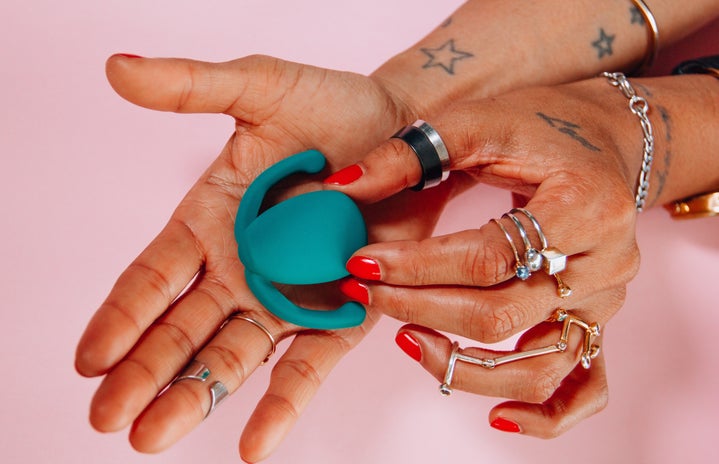The year was 2013, the boys were trying to hold back their snickers and I was sweating bullets, nervously waiting for the moment we would go over lesbian sex. Yep, you guessed it: 7th-grade sex ed. After spending hours learning about the vans deferens and fallopian tubes, our class had finally reached the part of sex ed that anyone actually remembers. Our teacher had given us a harsh warning that any giggling would result in getting kicked out of the classroom and emphasized how crucial it was that we act our age. As if 13-year-olds were the epitome of maturity, right? We did manage to get through the unit, though, thankfully. Downright cringe-worthy drawings of penis-in-vagina sex aside, it was a pretty acceptable sex-ed curriculum that stressed the importance of condoms and waiting until you’re ready. That is until it came to other kinds of sex and other kinds of protection. Gay sex took up one measly paragraph in our textbook and our teacher took approximately two nanoseconds to address that, yes, sometimes two people will have sex and both or neither of them will have penises.
That was it. She said to always use condoms and then moved on to the pregnancy unit. My young gay self sputtered silently, wondering how we could just skip whole kinds of sexual intercourse in a class literally designed to teach them.
Of course, we’ve made a lot of strides when it comes to teaching queer sexuality in sex ed curricula. According to the CDC, in 2016, “the majority of schools in 15 states and the District of Columbia” included LGBTQ+ sex in their sex ed syllabus. Obviously, we want to see that number as close to 50 as possible, but it’s comforting to see some improvement being made.

The only time in my sex ed experience that we spent more than five minutes talking about gay sex was in the STD unit and we learned nothing about the factors that might affect condom usage. The spiel ended with how it opened, that is, with “wear a condom or you’ll get HIV.” Although PrEP had already been approved by the FDA in 2012, it wasn’t mentioned even once. As we know there were close to 80,000 PrEP users in 2016, it would be downright unacceptable for it to be excluded from sex ed classrooms now.
Of course, even with the availability of protections like PrEP, it’s still important to teach about the safeguards condoms can provide against other STI’s. Luckily, in 2020, we have a lot more data available and we should make sure it is informing what is taught in the classroom about condom usage. For example, a 2014 study found that some factors that affect gay and bisexual men’s decision-making when it comes to condoms could be sorted into the following thematic categories: “relationship influences… (e.g. marriage, trust), access issues, and attitudes and experiences that both encouraged as well as discouraged condom use.” It makes all the sense in the world to take this data, which shows that these factors affect gay and bisexual men differently depending on their age, geographic location and sexual experience, and incorporate it into modern-day sex ed curricula just like how we’ve included teen pregnancy statistics for decades. We all know that you’re more likely to convince someone if you tailor your argument to address their actual concerns and real-life problems.
Similarly, dental dams still have a place in LGBTQ+ sex-ed curricula, as they’re the only available form of protection for oral sex with vaginas. However, knowing that studies have found that they’re hardly used, demanding that new curricula also include more representative information is a no-brainer. One logical addition could be safe-sex practices when it comes to using sex toys, as survey data shows that over half of women use a vibrator, and 78% of dildo owners are women. While sex toys are often used in queer sex, teaching proper sanitization and usage practices benefits everyone, as data shows they are widely used in the USA regardless of sexuality.
Ultimately, providing timely and accurate information in our sex ed classrooms is vital to not only promoting safe-sex but ending the stigma against sexual minorities.


